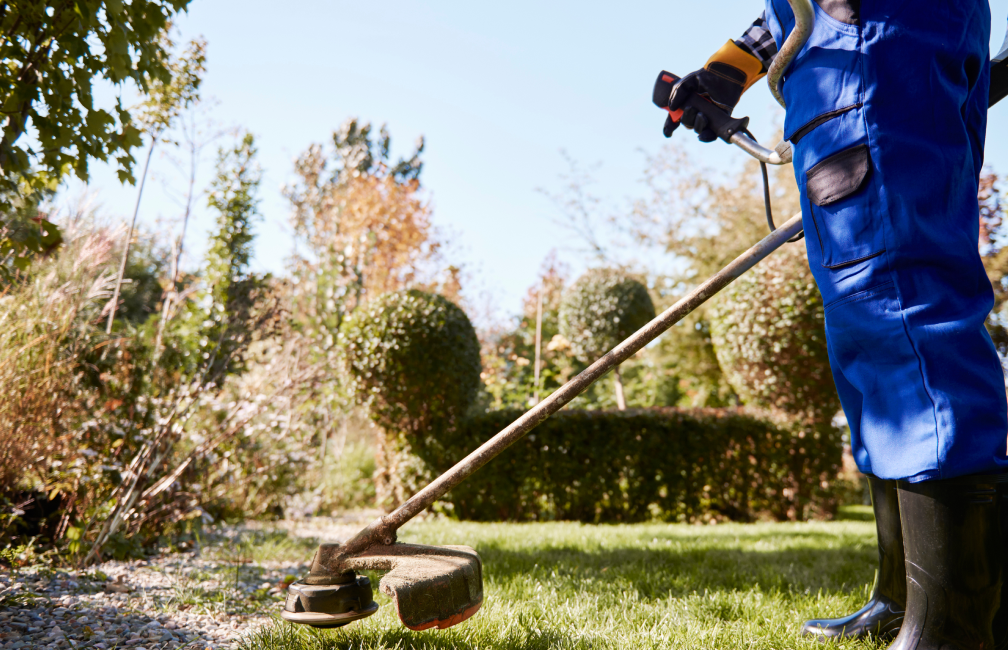
Natick Lawn Mowing Services
Choose our lawn mowing service for reliable, professional care that keeps your yard looking its best all season long. We combine local expertise, attention to detail, and top-quality equipment to ensure your lawn is healthy, beautiful, and hassle-free.
Get a Free QuoteWhen to Schedule Lawn Mowing in Natick, MA – Seasonal Guide
In Natick, MA, the timing of your lawn mowing routine is shaped by our unique New England climate and the specific characteristics of neighborhoods like Walnut Hill, South Natick, and the areas surrounding Dug Pond. The growing season typically begins in late April, after the last frost, and extends through October. Early spring mowing helps manage the first flush of growth, while regular summer cuts keep your lawn healthy during periods of high humidity and occasional drought.
Local factors such as the prevalence of shade from mature maples in neighborhoods like Sherwood and the well-drained soils near the Charles River can influence how often and when you should mow. Monitoring local weather updates and resources like the Town of Natick’s official website can help you stay informed about municipal guidelines and seasonal advisories.
Local Factors to Consider for Lawn Mowing in Natick
- Tree density and shade coverage (e.g., mature trees in Sherwood and Walnut Hill)
- Soil type and drainage, especially near the Charles River
- Average precipitation and risk of summer drought
- Frost dates marking the start and end of the mowing season
- Terrain variations, from flat lawns to sloped yards
- Municipal restrictions or advisories on mowing and watering
Benefits of Lawn Mowing in Natick

Professional Lawn Care Expertise
Consistent Scheduling
Enhanced Curb Appeal
Time and Effort Savings
Reliable Local Service
Healthier, Greener Lawns

Natick Lawn Mowing Types
Residential Lawn Mowing
Commercial Lawn Mowing
Weekly Lawn Maintenance
Bi-Weekly Lawn Mowing
One-Time Lawn Cutting
Seasonal Lawn Care
Large Property Mowing
Our Lawn Mowing Process
Site Evaluation
Lawn Preparation
Mowing Execution
Edging and Trimming
Cleanup
Why Choose Natick Landscape Services

Natick Homeowners Trust Us
Comprehensive Lawn Maintenance
Reliable Seasonal Cleanups
Expert Tree and Shrub Care
Efficient Snow Removal
Competitive Pricing
Satisfaction Guarantee
Understanding Natick’s Lawn Care Regulations, Seasonal Rules, and Neighborhood Factors
Natick, Massachusetts, blends historic charm and modern living across neighborhoods like Walnut Hill, South Natick, and Sherwood. Maintaining a lush, healthy lawn means following local ordinances as well as best practices for environmental stewardship. The Natick Department of Public Works (DPW) is your main resource for yard waste, trash, recycling, and public infrastructure. Schedules, regulations, and disposal tips are on the Trash & Recycling and Yard Waste pages. Larger volumes or specialty items may be brought to the Recycling Center for proper disposal.
Natick Department of Public Works
75 West Street, Natick, MA 01760
(508) 647-6550
Permits, Fines, and Noise Rules for Lawn Mowing in Natick
Many Natick properties are close to wetlands, brooks, or protected areas. Any landscaping, tree removal, or earth-moving near these features requires review by the Natick Conservation Commission. The Wetlands Protection (PDF) page details buffer zone requirements and permit processes. Unauthorized work may lead to restoration orders or fines.
Noise, nuisance, and property standards are set forth in the Natick Town Bylaws. Lawn equipment may typically be used between 7:00 am–7:00 pm on weekdays and 8:00 am–5:00 pm on weekends. Early or late mowing can result in complaints and possible citations.
Natick Conservation Commission
13 East Central Street, Natick, MA 01760
(508) 647-6452
Environmentally Friendly Lawn Care: Water Use, Fertilizer, and Stormwater Laws
Natick is dedicated to keeping its rivers, ponds, and wetlands clean. The Stormwater Management program prohibits dumping yard waste or chemicals into drains, brooks, or wetlands. Use fertilizer sparingly, never within 25 feet of water bodies, and consider mowing high (3+ inches) for drought resistance and healthy roots. Composting grass and leaves at home or through the Yard Waste program supports soil health and protects waterways.
Clipping Disposal, Composting, and Yard Waste Rules
Curbside yard waste collection is available on scheduled dates; full guidelines are found on the Trash & Recycling and Yard Waste pages. Use only paper bags or open barrels for leaves and grass—plastic bags are not accepted. For larger loads, the Recycling Center provides additional drop-off options. Illegal dumping in streets or waterways is subject to fines and enforcement.
Green Building, Zoning, and Preparing Lawns for Natick’s Climate
Major landscape renovations, retaining walls, or grading work must comply with the Natick Zoning Bylaws (PDF). Natick’s varied soils—from sandy loam to clay—do best with native or drought-tolerant grasses and periodic deep watering. Buffer strips and rain gardens are encouraged to capture runoff and protect wetland habitats.
Parks, Recreation, and Community Lawn Expertise
The Natick Recreation & Parks Department maintains sports fields, parks, and community event spaces across town. Contractors or volunteers working on public property must adhere to strict rules for mowing, fertilizer, and debris removal. Facility use permits, program registration, and seasonal updates are posted on the department’s website.
Natick Recreation & Parks Department
179 Boden Lane, Natick, MA 01760
(508) 647-6530
Navigating Code Enforcement, Buffer Zones, and Violations
The Town Bylaws and Wetlands Protection rules are enforced by the town for nuisance, buffer, and property maintenance violations. No yard debris may be left in public roads, drains, or conservation areas. Use the Natick GIS Maps portal to check property boundaries or wetland proximity.
Choosing the Right Mowing Height for Natick Lawns
Natick’s best results come from mowing at 3–3.5 inches. Taller grass conserves water, develops deeper roots, and crowds out weeds—ideal for summer heat and New England’s changing weather.